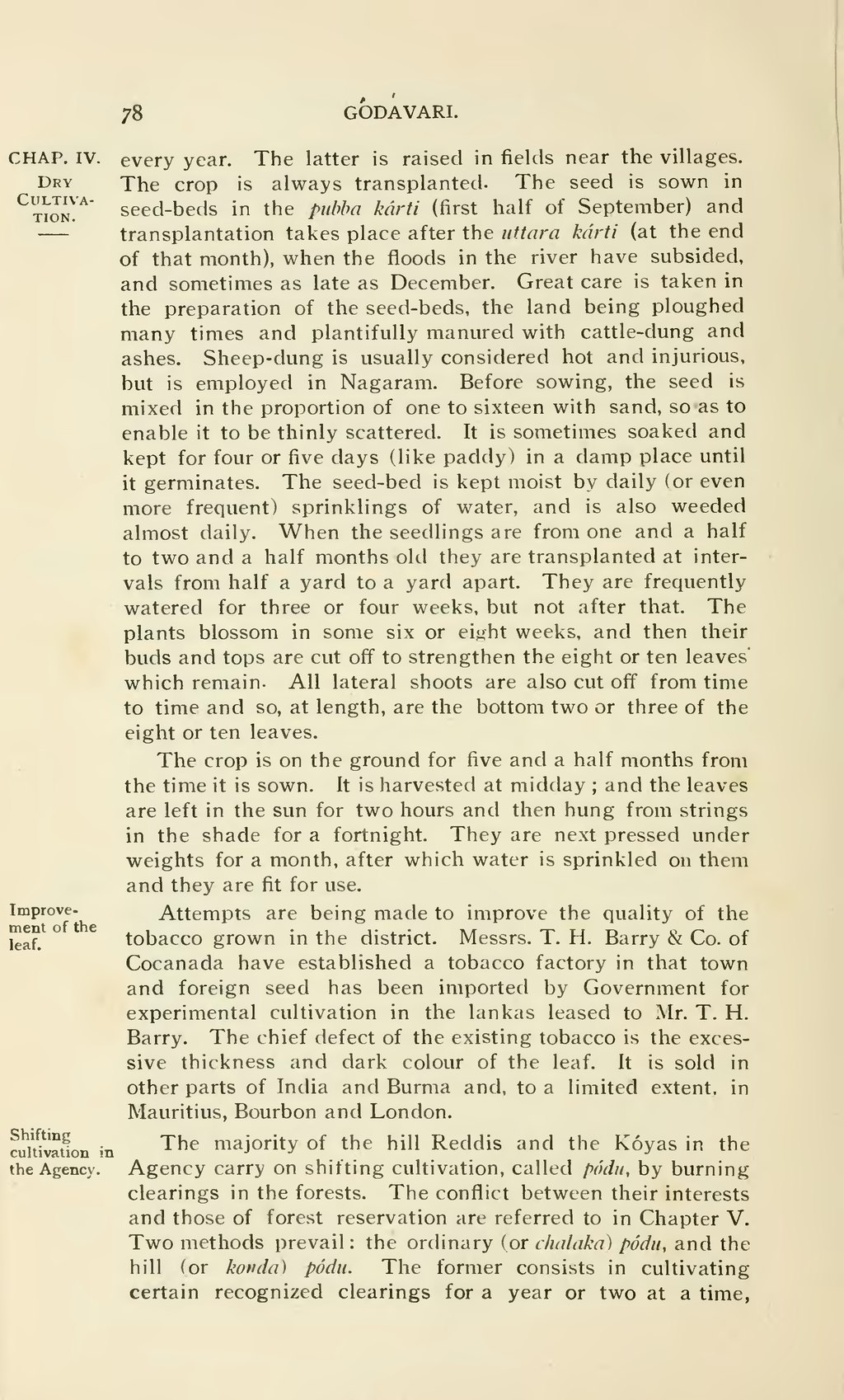every year. The latter is raised in fields near the villages. The crop is always transplanted. The seed is sown in seed-beds in the pubba kárti (first half of September) and transplantation takes place after the uttara kárti (at the end of that month), when the floods in the river have subsided, and sometimes as late as December. Great care is taken in the preparation of the seed-beds, the land being ploughed many times and plantifully manured with cattle-dung and ashes. Sheep-dung is usually considered hot and injurious, but is employed in Nagaram. Before sowing, the seed is mixed in the proportion of one to sixteen with sand, so as to enable it to be thinly scattered. It is sometimes soaked and kept for four or five days (like paddy) in a damp place until it germinates. The seed-bed is kept moist by daily (or even more frequent) sprinklings of water, and is also weeded almost daily. When the seedlings are from one and a half to two and a half months old they are transplanted at intervals from half a yard to a yard apart. They are frequently watered for three or four weeks, but not after that. The plants blossom in some six or eight weeks, and then their buds and tops are cut off to strengthen the eight or ten leaves' which remain. All lateral shoots are also cut off from time to time and so, at length, are the bottom two or three of the eight or ten leaves.
The crop is on the ground for five and a half months from the time it is sown. It is harvested at midday; and the leaves are left in the sun for two hours and then hung from strings in the shade for a fortnight. They are next pressed under weights for a month, after which water is sprinkled on them and they are fit for use.
Attempts are being made to improve the quality of the tobacco grown in the district. Messrs. T. H. Barry & Co. of Cocanada have established a tobacco factory in that town and foreign seed has been imported by Government for experimental cultivation in the lankas leased to Mr. T. H. Barry. The chief defect of the existing tobacco is the excessive thickness and dark colour of the leaf. It is sold in other parts of India and Burma and, to a limited extent, in Mauritius, Bourbon and London.
The majority of the hill Reddis and the Kóyas in the Agency carry on shifting cultivation, called pódu, by burning clearings in the forests. The conflict between their interests and those of forest reservation are referred to in Chapter V. Two methods prevail: the ordinary (or chalaka) pódu, and the hill (or konda) pódu. The former consists in cultivating certain recognized clearings for a year or two at a time,
